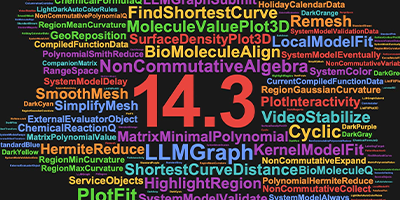Disney Animated (with Help from Mathematica) Is Best iPad App of 2013!
Disney Animated was just selected by Apple as the Best iPad App of 2013! Congratulations to Theodore Gray—one of the co-founders of our company—and Touch Press, a company incubated at Wolfram Research!
As Theodore explained on this Blog earlier this year, important features of Disney Animated would not have been possible without Wolfram technologies.
Creating the app required extensive use of Mathematica to accomplish the brilliant Color Maps feature, merging art with technology and creativity with computation. The process involved analyzing each individual frame of every Disney film and sorting the pixels of the frame by color. The pixels were then rearranged into a single straight line. This was generated for every frame, and the lines were placed side-by-side to create a long strip—going all the way through the entire film. You can see a short visualization of this process here:
Why do this? Theodore Gray explained the importance of “color palettes” in animation in order to set the mood for a certain story or scene. When looking at an entire film in the completed image described above, these color palettes become very noticeable—you may even be able to pick out scenes from your favorite Disney movies! (Click the image below to see the full-size Color Map of The Lion King.)
To make the Color Maps even cooler, the app allows you interact with the images, generating a thumbnail of any frame from the film that you select. Not to mention, the Color Maps are only one aspect of the app—Disney Animated contains an array of interactive features, illustrating the many facets of Disney’s history and innovation in the animation world. Check it out for yourself!




It might be interesting to experiment with smoothing the cluster analysis between “scenes” or camera cuts. Zero smoothing would be the present method: “the clustering [is] done on the pool of pixel values from all the frames within a zone of the film representing one “scene” or camera cut.” One hundred percent smoothing would be to ignore the “scene” and camera cut boundaries and just do the cluster analysis on a moving pool of pixel values equal to the average length of a “scene” and camera cut. As a first approximation intermediate smoothing would be a weighted average of zero and one hundred percent smoothing.